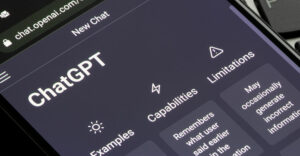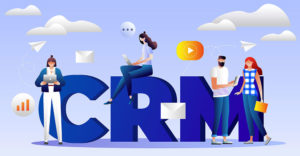Marketing and loyalty have a lot in common, and not just what you think.
Loyalty programs have traditionally been both the target of marketing campaigns and a form of marketing in themselves. But the comparison I see goes deeper. Both marketing and loyalty had delayed starts in the CRM world, and both exhibited traits of confusion among those charged with their rollouts; strongly evidenced by a lack of specificity in the early applications that carried their badges.
It seems like every new corporate function begins life under the wing of the CFO and, for a long time, marketing was the stepchild of the CFO. Marketing isn’t alone, either. Forty years ago, there was no IT department and MIS — or the management information system department — was watched over by a director who reported to the CFO.
Times change. When it was marketing’s turn the CFO dutifully took on the job of overseer with mediocre results. Early marketing systems were designed to appeal to the CFO’s penchant for cost and revenue numbers, so we all became adept at tracking marketing spend and useless indicators of performance like “eyeballs.” Eventually eyeballs gave way to conversions, and even revenue per marketing program, and to marketing spend, but that was a long time coming and it required more data collection and integration of departmental data than initially existed.
Loyalty Center Stage
Loyalty is back in the spotlight now; as multiple vendors have entered the loyalty market as both startups and established businesses take a swing at the ball.
Predictably, the early systems were wide of the mark, confusing and baiting customers with points in exchange for true customer loyalty. Points systems definitely work and keep customers coming back but they don’t infuse them with true loyalty.
A few years ago, I wrote a book about loyalty. The research I did for that project discovered scholarly articles that confirmed my suspicions. For instance, when incentives such as points and miles go away, so does much of the loyalty.
What’s disturbing about this is that loyalty doesn’t become established and therefore the systems that award points become nothing but elaborate discounting mechanisms. Let’s face it, if you give something of value, it has a cost; and paying for it comes out of your profit margin. In this sense a loyalty system isn’t much more than an accounting system for a delayed discount mechanism.
So long story short, loyalty automation is a good idea, but it still has to traverse the distance from accounting to actually infusing a business practice with reliable techniques that get customers to adhere to a company or a brand. This means getting them pay full price at least sometimes because by definition a loyal customer is one who sees value in the product or brand that they can’t get elsewhere regardless of small price variations.
More than this, a loyal customer also should be seen as one who adds value even when not making a purchase. A customer with no more budget or need at the moment for more product can still demonstrate loyalty by engaging others, say, on social media through endorsements or assisting new buyers with answers to questions of the how-do-I-do-this variety.
As with marketing, some of this takes analytics and linking up data from various silos. It also leans heavily on community software that seems to have fallen into the background in the last several years.
Loyalty Management
Last week Salesforce introduced its Loyalty Management application. Although the press release is short on details that would make you think of a version 2.0 of loyalty, the technological hooks are there and so is the institutional awareness that it’s not rolling out another accounting system.
On the plus side there’s the company’s basic bias toward placing the customer in the center, Customer 360, understanding all facets of the customer to provide the richest kind of engagement possible. Another very important advantage is the company’s platform which incorporates many of the auxiliary applications that a comprehensive loyalty program requires. This includes and is not limited to integrated customer data, analytics and machine learning, workflow, community, and, most importantly, the ability to generate running applications that thread together all of this and more in the service of a loyalty app.
What still needs articulation are the business processes that represent true loyalty engagement and not simple accounting. People close to the rollout assure me that such things are either there or coming very soon.
My Two Bits
Loyalty, like marketing, is a reactive business process. There’s only so much a vendor can do and it’s necessary to get signals back from customers and to act on them.
In marketing we learned to define and field programs and collect data about them. This led to habitual A/B testing on steroids. The winner in an A/B test lives another day, while the loser can be unceremoniously discarded. It’s very Darwinian in that respect and I can see the same things happening in loyalty.
A little A/B testing will enable vendors to not only understand how loyalty works for their customers but also to develop metrics and KPIs unique to their businesses.
That’s where loyalty needs to go — and we’re getting close.



























































